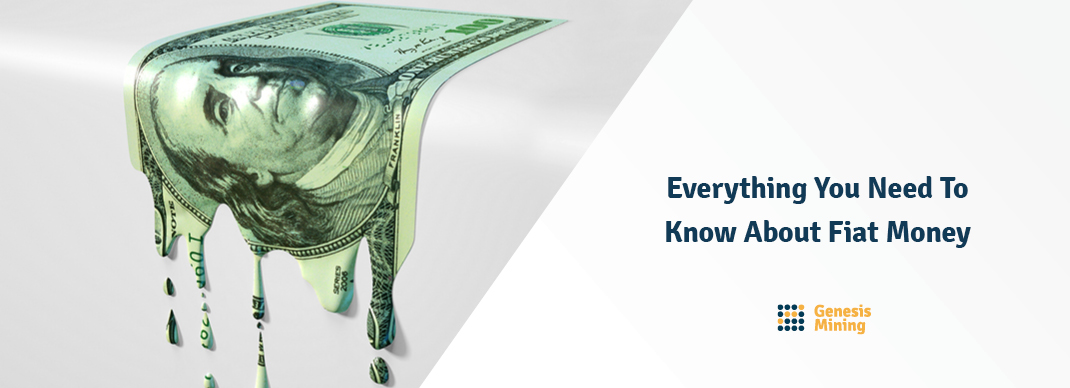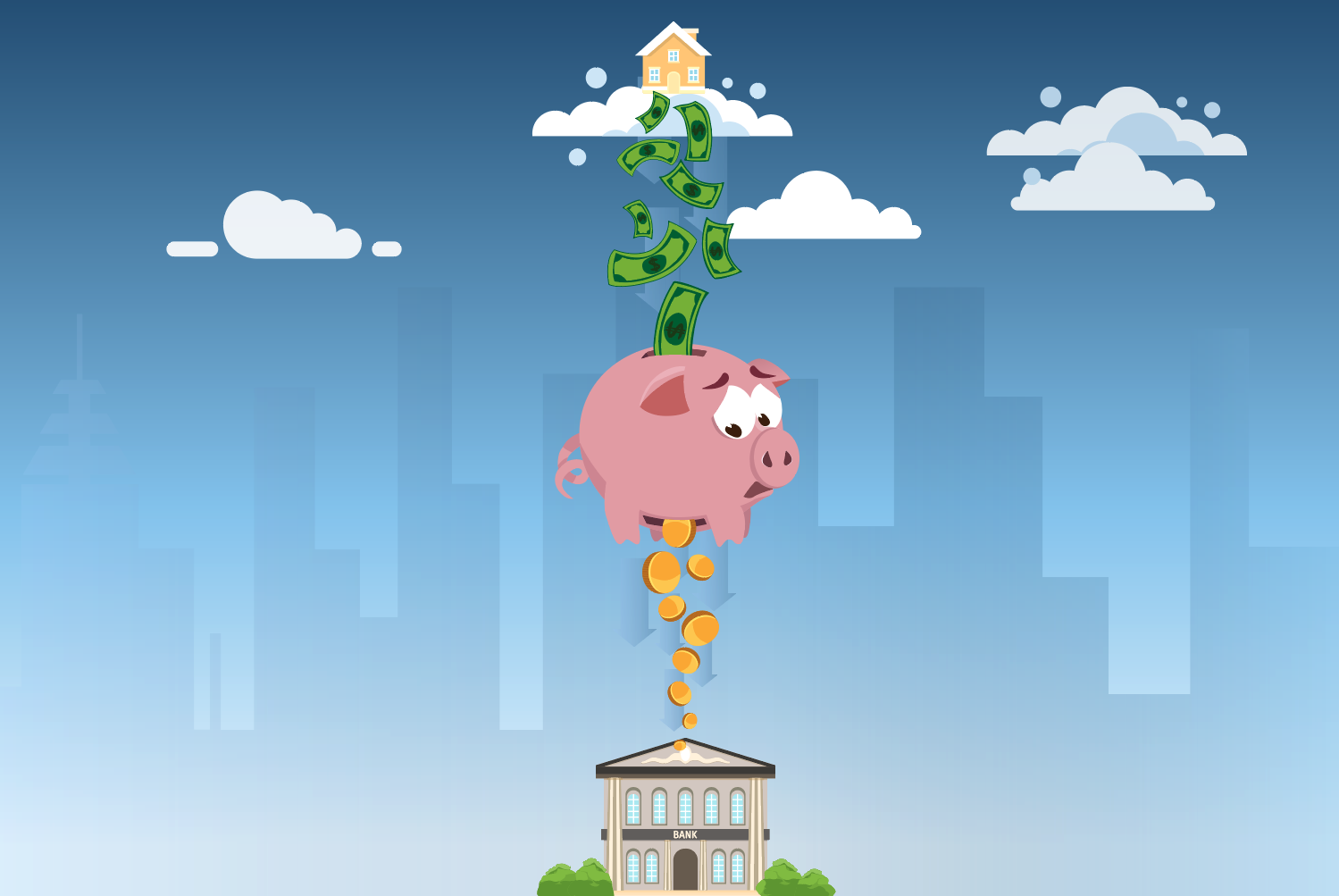[ad_1]
We recently issued a survey titled How Well Do Americans Understand Money? to 1,000 Americans to gauge their overall knowledge of the nation’s financial system. If our survey’s respondents are even moderately representative of the population at large (and we have a feeling that they are), there is a notable deficit in several areas of finance-specific knowledge in America.
For instance, 29% of respondents were under the impression that the dollar is still backed by gold. In fact, it is not. The money that Americans rely so critically on each and every day is backed by…nothing. Unless you count the full faith and credit of the United States government. This makes the U.S. dollar an example of fiat currency. So what is fiat currency, exactly?
One definition of fiat currency is any ‘national currency that is not pegged to the price of a commodity such as gold or silver’. To illustrate the nature of fiat money, let’s first discuss commodity money. Commodity money, a category to which the U.S. dollar once belonged, is tied directly to the price of an intrinsically-valuable entity, such as gold or silver. When the American financial system adhered to the gold standard, dollars and coins could be traded in for a set amount of gold. In other words, the value of the paper bills only fluctuated as the price of gold did, and because gold is a scarce resource, there was a reasonable expectation of consistent value.
On the flipside, fiat currency is not backed by any commodity, and thus has no intrinsic value. The proof of the value of fiat money is essentially in the pudding — if one dollar buys you a Coke one day, then that is the value of a dollar. If the next day it takes two dollars to buy a Coke, then the value of your dollar has halved, just like that. In other words, the value of fiat money is whatever you are able to buy with it.
The U.S. Treasury printed the first dollar bill in America in 1861. The Gold Standard Act passed in 1900, making American dollars redeemable for gold while establishing the price of gold at $20.67 per ounce. This was, in effect, the birth of the American gold standard. This Act remained in effect through the creation of the Federal Reserve in 1913, and was working well until The Great Depression, when a run on banks led citizens and banks to hoard gold, further devaluing the dollar and exacerbating hyperinflation.
President Franklin D. Roosevelt ordered the closure of all banks, and only allowed them to re-open once the banks and citizens handed over their gold to the federal reserve in exchange for dollars. This was the first significant step away from the gold standard and towards the fiat currency we use today. This transition was solidified in 1971, when the United States no longer held enough gold in its reserves to cover their foreign debts, and President Nixon decreed that the U.S. Treasury would no longer redeem dollars for gold. This was the death knell for the American gold standard.
When countries no longer couple their currency with a commodity such as gold, they are essentially given a free pass to print money, should they so choose. And as the amount of money in circulation increases, the value of each individual dollar decreases. In most cases you get inflation, and in extreme cases (looking at you, Zimbabwe) you get cartoonish levels of hyperinflation.
Here we hit on the core flaw in any fiat-based economy. There is no weight holding down the money supply, as gold once did, and thus there is no real restriction to printing unlimited amounts of cash. This can lead to extreme fluctuations in price, and a diminishing purchasing power of any given currency over time. If you are lucky, the decline in purchasing power will be steady. If you’re unlucky, you’re…Zimbabwe.
Just look at how the purchasing power of the U.S. dollar has declined since the creation of the Fed in 1913, and how rapidly it declined after America began its abandonment of the gold standard circa 1933. Like it or not, we now live in a world where fiat currency rules. Or does it?
Advocates for Bitcoin and other cryptocurrencies point to its inherent scarcity as one of its most well-conceived features. Because the number of Bitcoin that can ever be mined is fixed at 21 million, the digital currency has a quality similar to dollars under the gold standard. In a word, that quality is scarcity.
While the value of each Bitcoin fluctuates, as we have seen, the fixed amount of coins prevents hyperinflation from taking hold, as the scarcity creates a sort of price floor for each coin. This, advocates argue, is the stabilizing effect that we kissed goodbye when we abandoned the gold standard.
Those that argue the benefits of fiat currency point to its manipulability. And they’re right that in times where economic stimulation is a must, there is value in the ability to print money endlessly, funding a wartime economy or several infrastructure projects to get people back to work and the economy moving. That said, not everyone agrees with this Keynesian view of economics, and such spending almost always creates a bubble that will burst — it’s only a matter of time.
But at this point, it’s safe to stay that fiat currency is here to stay, for better or worse. And with the rise of cryptocurrencies, it is also safe to say that fiat currency is no longer the only option Americans have to buy, sell, and trade goods and services.
No, your bank is not a non-profit, nor a philanthropic organization in any sense of the word. Yes, your bank is out to make money, and it does so in several ways. If you didn’t know this, don’t feel bad — you’re not alone. A survey we recently conducted titled How Well Do Americans Understand Money? revealed that there is significant misunderstanding about our financial system, including how banks create revenue.
More than a quarter of respondents believed that banks were required to keep 100% of customer deposits in their reserves, an assumption that implies that banks have no clear means for making money from customer deposits. In fact, banks have several ways to grow their wealth, re-lending customer deposits among them. Let’s dive a bit deeper into the ways that your bank makes money.
1. Fractional Reserve Banking
Fractional banking, also known as Fractional Reserve Banking, refers to banks’ ability to lend out the money that its customers deposit. The term comes from the rule that banks must keep a fraction of customer deposits in its immediate reserves, while it is free to lend out the rest as it pleases. So how does fractional banking allow banks to make money?
When a customer deposits money into a bank, the bank is generally required to keep ten percent of the deposit on hand in its reserves. With the remaining 90 percent of the deposit, the bank may issue new loans on which they collect interest. And so the $900,000 that the customer deposited and that the bank lent back out will typically become a significantly larger sum. Often banks will lend money to customers in the form of mortgages, business loans, and personal loans. These loans guarantee long-term income for the bank in the form of interest payments. Banks may also lend customer deposits out to other banks, in which case they facilitate immense growth of the money supply.
If the bank issues a $900,000 loan to another bank, that borrowing bank can then lend the $900,000 out to yet another bank, and thus each bank can plausibly grow their cash reserves through a never-ending cycle of lending. And thus, the money supply may continue to grow without end, and without any real commerce (outside of basic lending) taking place.
2. More Fees, Please
When it comes to fees, banks are insatiable. Fees are a key cog in banks’ money-making arsenal, so much so that Wells Fargo opened millions of fake accounts in customers’ names primarily to collect fees on those accounts. Even when the now-notorious bank supposedly closed those accounts, customers continued to be hit with fees.
Overdraft fees, monthly account maintenance fees, minimum balance fees, overdraft protection fees, returned deposit fees, ATM fees, lost card fees…you name a fee, a bank has probably charged it. You have surely been hit with some of these fees in your own lifetime. If you haven’t woken up, checked your bank account, and seen a notice that your account is overdrawn and that you will be paying an extra 30 bucks or so to the bank due to being overdrafted, are you even really living?
On a serious note, these fees, along with fractional banking, are the lifeblood of banks. Fees help keep the lights on, the reserves flush, and the investors happy. Fees are so important to banks, and such an obvious way to bleed customers of more money, that you should probably double-check that you don’t have any fake accounts open right now. You know, just to be safe.
3. Exorbitant Credit Card Interest Rates = Cash For Banks
If you are representative of the average American, you probably don’t need me to elaborate on the perils of credit cards from the cardholder standpoint. The total balance carried on all Americans’ credit cards hit nearly $444 billion in September 2019. The average American household holds just under $7,000 in credit card debt. Credit cards are some of the most expensive forms of debt that one can own, as the average interest rate on a credit card is 14% to 15%, according to the Fed. Paying 15% annual interest on anything means you are handing over a substantial amount to the lender, and the higher your outstanding balance climbs, the more interest you will pay.
As you cringe at your past decisions each time you see your monthly payments withdrawn from your bank account, somebody at the bank who issued you the card is sitting back chuckling. These credit card interest payments represent a significant portion of banks’ earnings, and — let’s be honest — you knew the interest rate when you signed up for the very costly piece of plastic. You can’t blame banks for being short on sympathy for the credit card holders they gouge on a daily basis.
4. Interchange Fees
Have you ever seen a sign abutting a convenience store card reader that says something to the effect of ‘cards not accepted for purchases of less than $5’? Have you ever wondered why such a policy would be in place? Such a policy can be linked back to another way that banks make their money: interchange fees.
Interchange fees are the payments that banks collect each time that you make a purchase with a debit or credit card. The merchant typically pays these fees, and the payment of each individual fee may be split between the merchant’s bank and the bank that issued your credit or debit card used in the transaction.
You would be naive, at this point, to assume that your bank is simply looking out for your interests. Just like all banks, yours is a for-profit business, and their ultimate goal is to make money. Be alert to fees that you may not know you are being charged, be conservative when signing up for and using credit cards, and understand the cost to the merchant each time you swipe your card.
Nothing in life is free, not even a free lunch, and banking is no exception to the rule.
[ad_2]
Source link




